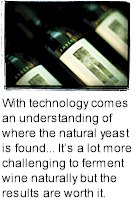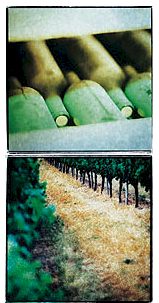


Established in 1986, Amberley Estate has remained true to it's original philosophy of making premium wines from fruit grown exclusively in the Margaret River region. Such a promise has ensured Amberley Estate wines capture the richness and character of this world-class appellation. Amberley Estate's flagship property covers a total area of 67 hectares with 31.48 hectares under vine. It was primarily the subject of a detailed soil, climactic and aspect analysis before the original owners decided to establish a vineyard.

Several criteria had to be met - the total property needed to comprise of at least 70 hectares of untouched natural landscape in order that 40 hectares could be cleared and pastured. The ideal soil requirement was deep red gravelly loam with an abundance of Jarrah and Marri (Red Gum) Trees in existence. Easterly slopes to protect the vines from westerly gales and adequate, good quality water on site were a necessity. The current site satisfied these criteria and the first vines were planted in 1986.
One can catch glimpses of the blue waters of Geographe Bay through the valley which runs through the centre of the property and is protected from westerly winds by towering Jarrah and Marri Trees and steep slopes. These winds in particular can devastate setting fruit in the spring, making vine protection a necessity. Other favourable features of nearby Geographe Bay are the moderating & cooling influence it has on the hot easterly winds which blow during the height of summer and which have the potential to damage and burn the vine canopy and fruit.
Easterly and north easterly facing slopes on the property enable vines to capture maximum morning sunlight when they're most active and minimise heat stress from the afternoon sun. Phil Smith is responsible for overseeing the overall operation of the Amberley Estate vineyards, as well as the provision of grower liaison services to over twenty contracted growers in the area, negotiating their contracts and sourcing all fruit required for the company.

His vineyard philosophy is based on a belief that fruit and wine quality can only be achieved through well-balanced vines from a uniform vineyard. Through effective management of shoot growth and cropping levels as well as effective management of pruning, one can create vines with a balanced ratio of pruning weight to fruit weight. Such balanced vines and uniform vineyards lead to high quality fruit being delivered to the winery.
Amberley Estate's wines are a total representation the region, and a blend of old and new winemaking techniques. The varieties planted at the vineyard are considered the best performing and most popular varieties from the region. An additional vineyard, Yallingup Estate, is managed by Amberley Estate. Yallingup Estate has 11 hectares planted and is located off Abbey Farm Road near Amberley.
Fruit is sourced from 20 contract growers located throughout the Margaret River region. They are situated between Cowaramup and Marybrook in the north of the Margaret River appellation and occasionally as far south as Witchcliffe.
